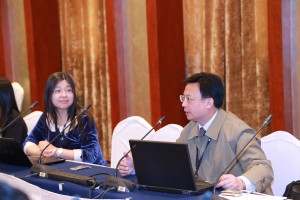Chinese Community Statement on Trademark Clearinghouse and IDN Variants
Chinese Community Statement on Trademark Clearinghouse and IDN Variants
Chinese At-large community unaminously agreed at the meeting on April 11, 2013 to submit the following statement to ICANN.
We are very disappointed at the implementation model outlined by “Trademark Clearinghouse: Rights Protection Mechanism Requirements” (hereafter “Requirements’) published on April 6, 2013. Particularly, the model completely overlooks the critical issues of IDN variants with respect to trademark clearinghouse (TMCH) and as a result would seriously impact the public interest in the pertinent user communities.
According to the Requirements, matching domain name labels will be generated for each Trademark Record in accordance with the Trademark Clearinghouse’s domain name matching rules.
The matching rules at the TMCH obviously, however, fail to take into account the trademarks in IDN scripts involving variants, although the variant issues had been raised by the language community experts at the Implementation Assistant Group (IAG).
Variant matching is actually critical for certain language communities. Take Chinese for example, a trademark holder may have registered a word-mark in simplified characters but it is unlikely to register the same word-mark in traditional characters and absolutely unthinkable to register in a mixed-up character setting. In this case, there will only be one trademark record generated in the TMCH. Since the new gTLD registries are obliged to offer sunrise services and trademark claims for the trademarks recorded in the TMCH, only that simplified word-mark will be eligible for sunrise registration and trademark claim services and leaves all other “variants” open for cybersquatting. Ruling out the un-registered word-mark variants would make TMCH completely useless to Chinese trademarks.
What is even more striking is that the Requirements specifically prohibits any registry from implementing variant or bundling rulesand allocating domain names under such variant or bundling rules prior to the conclusion of the Sunrise Period. Such restriction actually excludes any solution for IDN trademarks involving variants to be accommodated in the sunrise period at the TLD level, even though a registry is willing fix the variants through its registration management and at its own costs.
Trademarks have very important function of safeguarding public interests by identifying the source of goods or services. The malfunctioned TMCH design would cause serious public confusion and market chaos. The consequence will be even more serious regarding the trademarks in the fields of banking, insurance and other high-secure businesses. Although at-large community never supports over-extensive trademark measures, ICANN should treat all the trademarks equally, irrespective of the characters of the trademarks, and protect the users in all language communities from confusion equally.
If ICANN is even willing to protect 50 “derivations” that are DIFFERENT from a trademark per se, why does it refuse to entertain the SAME trademark in variants. This is illogical by all means. On the other hand, all 50 derivations, if applied to a Chinese-character trademark, will all involve variant issues definitely.
At-Large community has made the statement on the Trademark Clearinghouse (TMCH) in September 2012, in which at-large community concerns that the design of TMCH model that uniformly applies to all the gTLD registries, irrespective of their difference, may not provide the tailored services that are really needed by the new gTLD registries. At-large community suggested that “more open and flexible model deserves further exploration.”
The Chinese Internet user community, dating back to October 2011, suggested that IDN-script trademarks involving variants should be taken into account in the TMCH services and ICANN consider adopting community-based solution to address this issue. Many other language communities shared the views of Chinese community.
Unfortunately, ICANN has been deaf to the user community’s feedback and inputs and moves steadily toward the centralized, inflexible and variants-unfriendly TMCH. At-large community, therefore, strongly suggests that ICANN support community-based TLD-bottom-up solution for TMCH implementation and address the IDN variant issue before TMCH provides the services to the new gTLD registries.
Permalink Comments off

